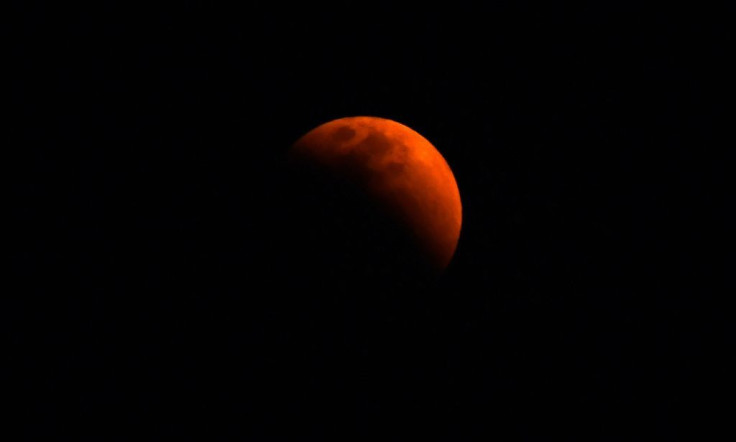Blood Moon 2018 Live Stream: Where To Watch Century’s Longest Lunar Eclipse

On the night of July 27, sky-watchers in different parts of the world will be treated to a blood moon — a total lunar eclipse that would be the longest of the century.
At around 5 p.m. GMT (1 p.m. EDT), the sun, the Earth, and the moon will come in a close alignment, with the planet in between. As a result of this unique formation, the shadow of our world will start falling on our natural satellite, leading to a “totality” or the phase when the moon is completely under the shadow of Earth.
The maximum eclipse phase, as EarthSky reported, will last for nearly 1 hour and 43 minutes making it the longest total lunar eclipse of the century. The whole event from start to finish — including the partial eclipse period — will last for about four hours.
Why blood moon?
While the moniker “blood moon” sounds a little spooky, there is a well-defined scientific explanation for it, thanks to the color of the moon. During the event, the moon comes within the shadow of Earth, but instead of turning completely dark just as one would expect from an object falling under a shadow, it will take a dark reddish hue during the totality.
This, as scientists explained, is due to the bending of sunlight from the atmosphere of Earth and reflecting off the surface of our satellite. Though most of the light gets blocked by our planet, some passes through outer atmosphere. Shorter wavelength light (such as blue and green) is scattered in the atmosphere, but red, which is a longer wavelength light, passes and falls on the moon, making it appear as a dark reddish disk.
When, Where To Watch The Eclipse
As mentioned, the moon will start aligning itself with sun and the Earth at around 5 p.m. GMT (1 p.m. EDT). It will start appearing reddish around 6:30 p.m. GMT (2:30 p.m. EDT) and will remain fully eclipsed between 7:30 p.m. GMT (3:30 p.m. EDT) and 9:13 p.m. GMT (5:13 p.m. EDT).
The entire celestial event will end at around 11:28 p.m. GMT (7:28 p.m. EDT). However, the time of the eclipse clearly suggests it won’t be visible in North and Central America. Those living in parts of Australia, Asia, Africa, Europe, and South America will get to see the Blood Moon.
That said, if you’re one of the unlucky ones or if the skies are not clear in your region, there is always an option to go online and watch the whole event live. NASA TV will live stream the eclipse, starting 2:15 pm EDT, while Bareket Observatory in Israel will begin its webcast 15 minutes later.

© Copyright IBTimes 2024. All rights reserved.





















